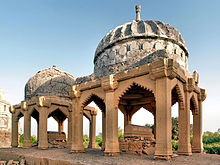History of mirpur
Mirpur district (ضلع میر پور) is a district in Azad Kashmir.[1] The district is named after the main city, Mirpur. The district of Mirpur has a population of 456,200[2] and covers an area of 1,010 km2 (390 sq mi). The district is mainly mountainous with some plains. Its hot, dry climate and other geographical conditions closely resemble those of Jhelum and Gujrat, the adjoining districts of Pakistan.The original Mirpur district, along with the districts of edia of Mirpur district is evolving day by day and a number of the media company are taking interest in Mirpur and launching their newspaper as Mirpur edition Daily Mahasibstarted its journey in February 2006 other newspaper also launched their Mirpur edition like daily Adalat, daily Shaheen, Daily Kashmir express. they all provide daily Mirpur news, International news, national news, political news, sports, entertainment, showbiz, commerce, business news.Erstwhile Mirpur District (including present-day Bhimber District) has a considerable refugee population (like refugees in Karachi) They are from almost all the castes; however, Mirpur (especially Tehsil Dadyal) has predominantly Jat and Gujjar caste refugees. The villages of Jat refugees in Tehsil Dadyal are Mohra Kanyal, Malkan and Mehndir Colony. A vast majority from Mohra Malkan has shifted to Village Khairowal Jattan, Tehsil Barnala, Distt Bhimber in 1974 where each family was allotted 64 Kanals of agricultural land. However, many of the families which shifted to Khairowal or Chamb still have nostaligic feelings of their days in Dadyal and great people of Dadyal. They do not miss an opportunity (funeral, weddings, festivals) to enjoy their occasional reunions with the inhabitants of Mohra Malkan and other nearby villages like Chapran, Mehra etc.produce of quality rice from the paddy fields of Khari Sharif between Upper Jhelum Canal and Jhelum river is very famous and popular for its aroma and taste. The production of electricity from Mangla Dam provides the energy needs for Azad Jammu and Kashmir and Northern PunjabMirpur was historically a part of the Punjab region. However it became a part of the Jammu division of the princely state of Jammu and Kashmir in a deal between the rulers of that state and the British. Since Mirpur lies at the point where the Jhelum River breaks out of the heavily forested foothills of the Pir Panjal mountains into the plains of the largely treeless Punjab. It was an ideal spot for the construction of the boats used to carry goods down the five rivers of the Punjab to the Indus River and onto the seaports in the Indus delta. At the same time long-distance ocean trade was shifting from sail to steam. There was a huge demand for men who were prepared to work in the hot, dirty and dangerous stokeholds of the new coal-fired steamers. British seamen avoided such jobs whenever they possibly could.[citation needed] They preferred to work on deck. But in the 1870s Mirpuri ex-river boatmen were desperately searching for a new source of income.[citation needed] Although unfamiliar with stoking coal-fired boilers, they were prepared to learn and quickly gained jobs as engine-room stokers on new steamships sailing out of Karachi and Bombay,In fact, the remains of the old city (Old Mirpur) are under the waters of the Mangla Lake, bit during the colder months of March and April, the water level recedes to such an extent that one can travel on motorcycle on the old Mirpur, road which still exists. The holy shrines of Syed Abdul Karim and Meeran Shah Ghazi then become visible and so do the



Comments
Post a Comment